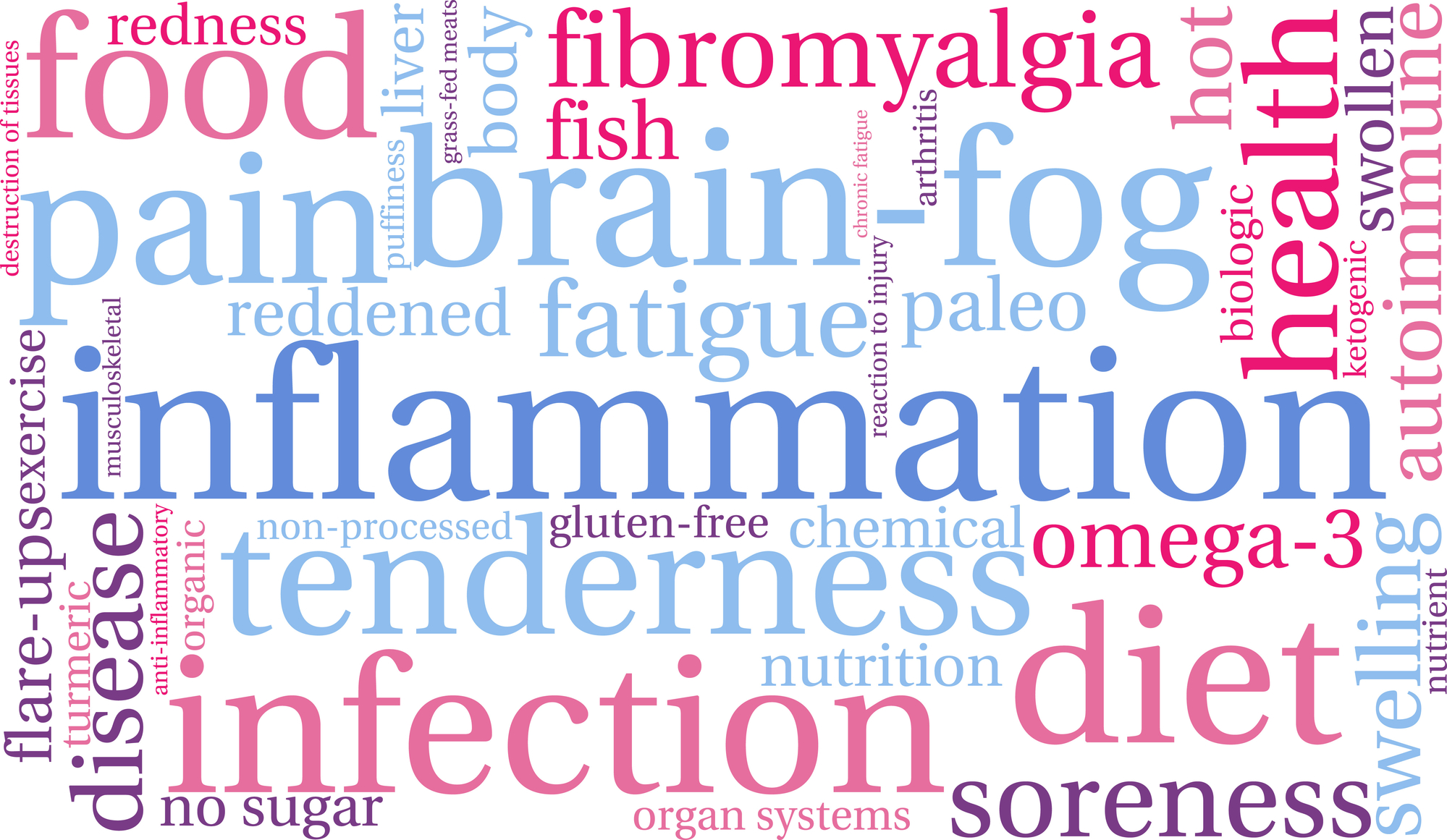
Inflammation gets a pretty bad rap because typically when we think of inflammation we associate it with pain. But did you know that inflammation is actually a critical process in our body’s immune system? Without inflammation our bodies would be more susceptible to prolonged healing of injuries and diseases. There are two main types of inflammation: acute inflammation and chronic inflammation.
Acute inflammation occurs during events like falling off your bike and hitting your knee or accidently cutting your finger. Our body sends a rush of white blood cells to investigate this injury and gives off signals to send in more help, these signals are called cytokines. This process results in swelling, redness, warmth, and even pain.
The second type is chronic inflammation. This type is similar to acute inflammation but in the absence of any sudden injury. Instead our body is continuously sending out inflammatory cells in responds to other foreign triggers like smoke, excessive fatty cells, or chemicals. These symptoms may include fatigue, general soreness, joint stiffness, or skin rashes. There are many life choices and medical conditions that can put us at risk of developing chronic inflammation, some of them are tobacco cigarettes, alcohol intake, heart disease, uncontrolled diabetes mellitus, rheumatoid arthritis, and ankylosing spondylitis. We can avoid some of these conditions by not using those products while others might require more work and routine check-ups with your designated medical provider.
When inflammation becomes chronic or the process becomes excessive with swelling or pain the next steps would be to try and avoid or reduce the inflammation. There are many approaches to avoiding inflammation whether it is lifestyle changes, changing our diet, or medications. Lifestyles changes would be exercising regularly, not using any tobacco or nicotine based products, and avoiding excessive alcohol intake. When it comes to our diet there are multiple food options that have anti-inflammatory properties such as tomatoes, nuts, olive oil, broccoli, spinach, tuna, salmon, and berry fruits. There are also many spices that have anti-inflammatory properties, the most common one is turmeric. Turmeric has a compound called curcumin in it which works as a strong anti-inflammatory. Finally there is medications that can be used to control inflammation such as Advil (Ibuprofen) and Aleve (Naproxen). These medications work by blocking the production of an inflammatory signal called prostaglandins. There are other medications like disease-modifying anti-rheumatic drugs (DMARDs) and biologics that work more specifically within the inflammation process that are used for chronic inflammatory diseases. These medications can have side effects on other areas of the body and should always be administered and monitored by your medical provider.
Here at Twin Cities Spine Center we commonly see patients with either acute or chronic inflammation issues giving them spinal pain. Spinal pain and inflammation can be managed in a similar fashion by trying diet adjustments, avoiding inflammatory triggers like tobacco and alcohol, routine exercising, anti-inflammatory medications, or even injections using a corticosteroid medication that works similarly to Advil and Aleve.
Inflammation can sometimes seem unavoidable but hopefully now you have a better understanding of what the purpose of it is and some tips to help avoid it.
This blog post was written by Nick Beaudoin, physician assistant for Twin Cities Spine Center.

Click here to learn more about Nick Beaudoin, PA-C